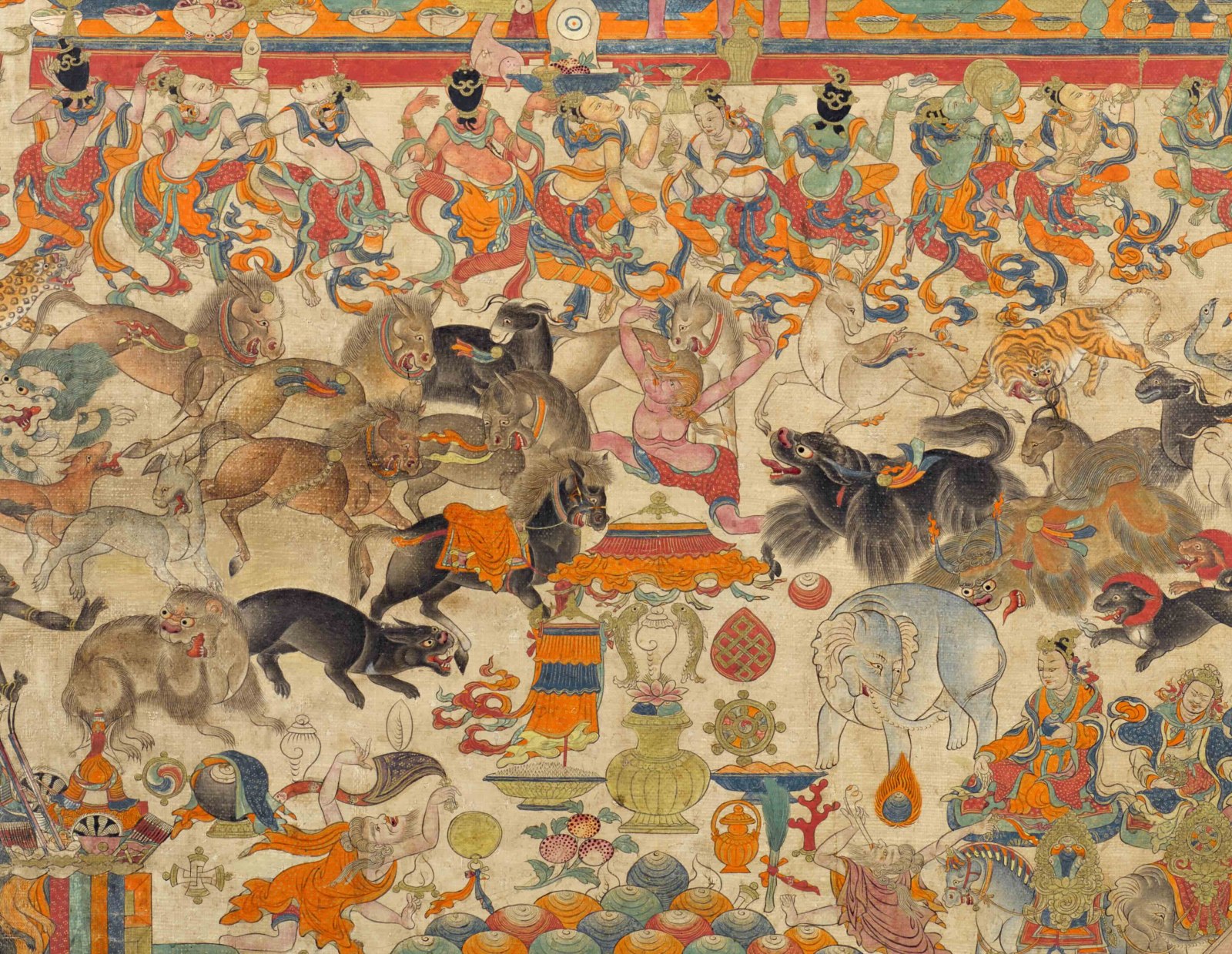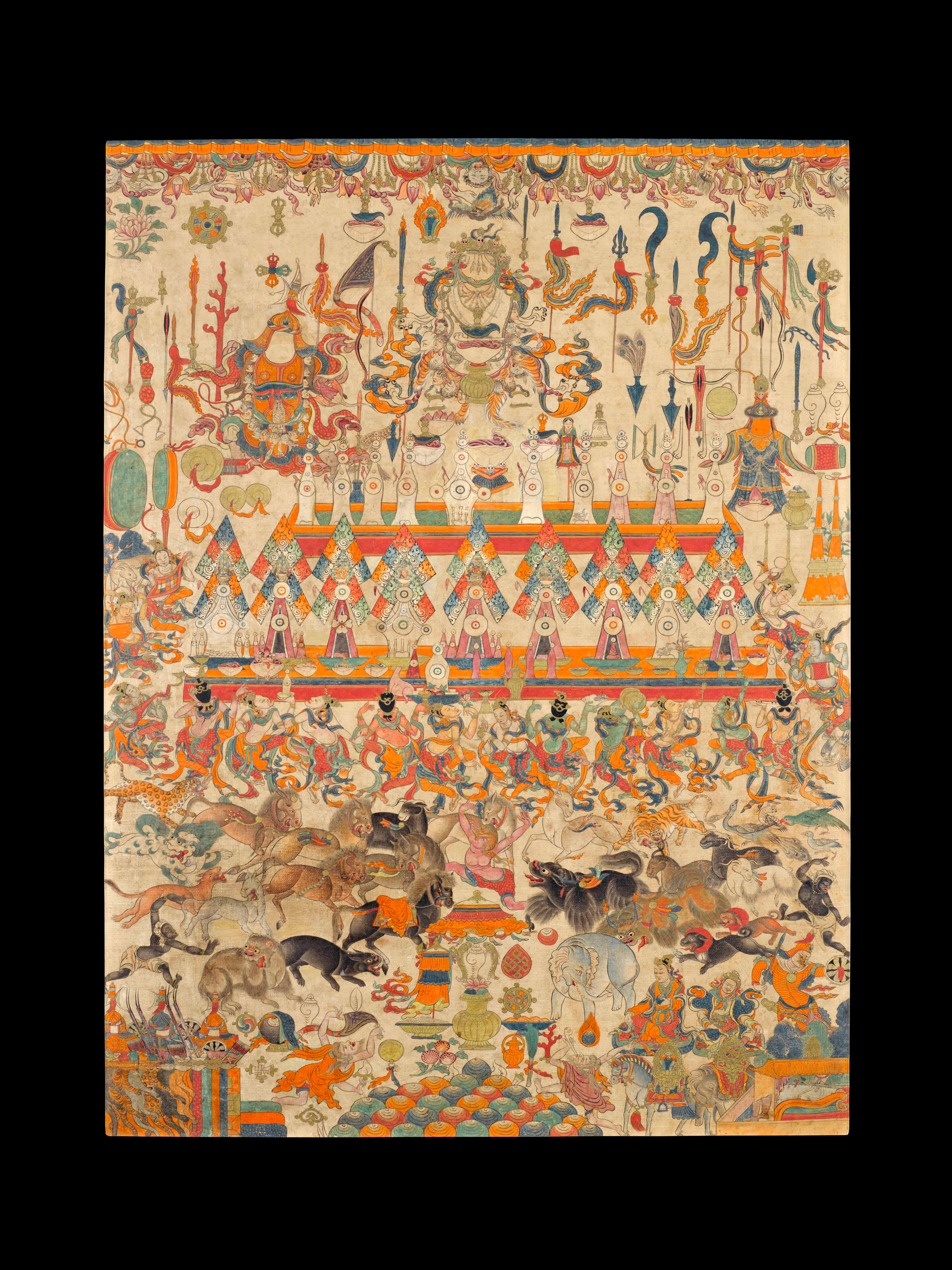
Provenance:
Christian Humann (Pan-Asian Collection), 1974-1982
Robert Hatfield Ellsworth, New York, 1982-1993
European Private Collection, acquired in 1993
In the tradition of gyentsog (sets of ornaments) painting, the central deity is evoked by the portrayal of his/her vacant garments, ornaments, and attributes. Here, for example, a voluminous robe, flayed tiger-skin dhoti, garland of heads, and five-skull tiara indicate the Dharmapala Mahakala. In addition to Mahakala, smaller empty robes on his left and right suggest the inclusion of two additional dharmapalas. The deities are surrounded by a profusely-dispersed display of ritual objects, including representations of the eight auspicious symbols (ashtamangala): endless knot (srivatsa), lotus flower, pair of goldfish, dharmachakra, white conch shell, jeweled parasol, treasure vase, and victory banner. Skull-cups and other bowls with offerings and flaming tormas are depicted in the registers below.
A group of musicians and dancers cavorts in a frenzied manner in the lower section, some with their heads turned to display their gold hair ornaments. In the background at the bottom, a variety of lively and somewhat menacing animals including jackals, elephants, tigers, mules, lions, yaks, leopards, stags, horses, peacocks, and parrots, amongst others, add to the overall composition. Bordering the scene at the top is a frieze with eviscerated human entrails, flayed skins, and severed human heads. A small figure of Garuda with wings spread hovers nearby.
Thangkas of this genre were often draped over Buddhist altars as symbolic offerings that were a more permanent presence than other types of donations. Although dedicated to a variety of deities, gyentsog paintings are generally similar in both style and format. In Tibet: Tradition and Change, 1997, Dr. Pal notes these types of paintings “are among the most expressive and surrealistic of all Tibetan images.”

